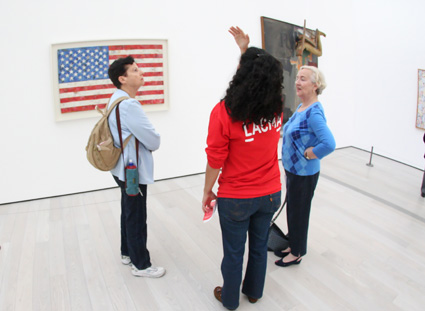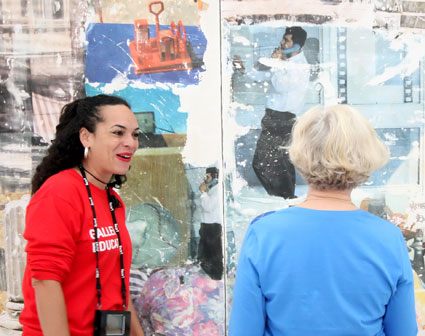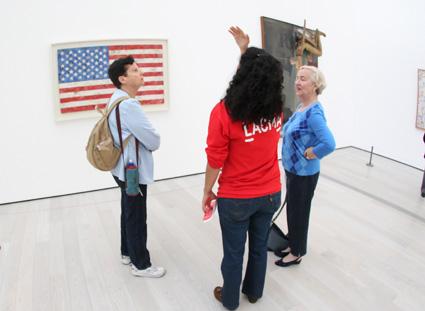
I come from a family of artists and teachers, so when the world of museum education came knocking at my door it seemed a perfect match, and we rode off into the sunset together. I say “knocking at my door” because it found me. I was living in London producing and hosting a radio show where we featured various artists from the African Diaspora, discussing their influences and contributions. This led to an introduction to England’s Victoria and Albert Museum of decorative and applied arts. Their education department asked if I wasn’t interested in helping them host a black history month event. I jumped at the chance! It’s been bliss ever since. I continued to work in their access and inclusion programs trying to help bridge the gap between a seemingly elite institution and people’s general wants and needs from a public establishment dealing with the arts.
It only seemed natural that upon returning to my native Los Angeles I’d join forces with LACMA and their education team. After all, I’d grown up coming to this museum and had fond memories of family outings, field trips, and college projects. When the position of gallery educator arose it seemed a nice fit for me. On weekends we educators are placed in the contemporary and modern sections of the museum to answer questions, engage with the public, and initiate dialogues based on the pieces in the gallery.

This new approach to touring seemed interesting. Instead of the educator leading the tour, the patron would. A perfect recent example was a couple from Shanghai who wanted to discuss what music some of the artists might have been listening to during their own eras. This opened up a discussion about the many artists influenced by music (from Kandinsky to Klee) and ended with the influence free jazz had on abstract expressionism.
I love the personal touch that comes from having a small audience with a particular interest. Whether it's facilitating “Can you help me compare and contrast German expressionism and African art? “ or being there when someone concludes that “Lichtenstein is a modern-day impressionist,” they’re able to find their own answers through a series of questions we develop together around the object or artist. Why do you think the artist chose this color? What does it remind you of? How is it relevant to the subject matter? If LACMA is an artists’ library of sorts, then our meaningful experience with the art comes from sifting through its pages together.
Amber Edwards



